1. The Sheer Size of the Stores

One of the first things Europeans notice about American supermarkets is their massive size. In Europe, grocery stores are often smaller, tailored to local needs, and stocked with just enough variety for the surrounding community. American supermarkets, by contrast, can feel like sprawling warehouses, complete with high ceilings and endless aisles, according to International Supermarket News. Walking into one of these stores can be overwhelming, especially for someone used to compact shops where you can see the entire store from the entrance.
The size isn’t just about space—it’s about choice. A single product like toothpaste can have dozens of variations, from whitening to sensitivity relief, to different flavors or brands. Europeans, who are accustomed to two or three choices, often scratch their heads wondering why anyone needs such extensive options. It’s not uncommon for visitors to find themselves spending far longer than expected navigating an American grocery store simply because there’s so much ground to cover.
2. The 24/7 Availability

Many Europeans are surprised to find that supermarkets in the U.S. often operate 24 hours a day, seven days a week. In much of Europe, supermarkets adhere to stricter hours, typically closing by 8 or 9 PM and remaining shut on Sundays or public holidays. The idea of popping into a store at 2 AM for ice cream or groceries feels almost surreal to some.
This difference stems from cultural attitudes toward work-life balance and convenience. In the U.S., the emphasis on availability caters to a culture where time is money, and people value flexibility. Europeans, who are more accustomed to planning their shopping trips within limited hours, may find this round-the-clock access both amazing and a little excessive.
3. The Overabundance of Processed Foods
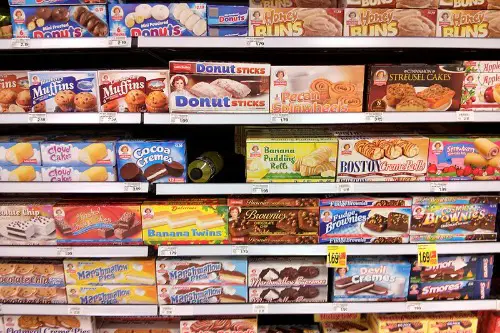
American supermarkets are famous—or infamous—for their vast aisles dedicated to processed and pre-packaged foods, according to a recent study available on Research Gate. From chips to microwaveable meals, the options seem endless. In contrast, European supermarkets tend to focus more on fresh produce, bread, and meats. While pre-packaged foods exist in Europe, they rarely dominate the store in the way they do in the U.S.
The focus on processed foods reflects cultural differences in eating habits. Americans prioritize convenience, often eating on the go, while many Europeans favor sit-down meals with fresh ingredients. Visitors often remark on the overwhelming number of frozen pizzas, instant noodles, and sugary snacks available in American stores, wondering how there’s space for anything else.
4. The Excessive Use of Plastic
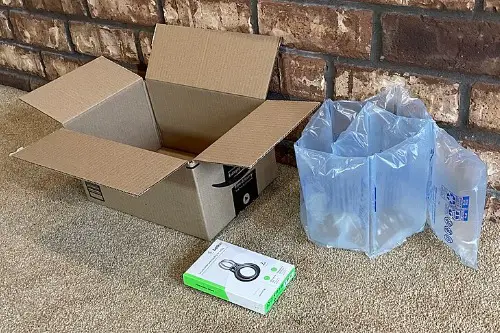
Another thing that stands out is how much plastic American supermarkets use. Fruits and vegetables are often pre-wrapped, something that many Europeans find unnecessary, according to The Guardian. Even items like bananas—nature’s pre-packaged fruit—might come sealed in plastic bags. Meanwhile, European markets, especially in countries like Germany or France, tend to encourage bringing your own reusable bags and use minimal packaging.
This excess of plastic isn’t just limited to packaging; single-use plastic bags at checkout counters are also widespread. In Europe, where bringing your own shopping bag is the norm, seeing a cashier double-bagging a gallon of milk might feel like an environmental faux pas. The cultural emphasis on convenience in the U.S. clashes with Europe’s push toward sustainability.
5. The Absence of Alcohol (in Some States)

In many parts of Europe, it’s standard to find beer, wine, and spirits in the same supermarket where you buy your eggs and cheese. In the U.S., however, this isn’t always the case. Depending on the state, alcohol may be sold exclusively in separate liquor stores, or there may be restrictions on selling it during certain hours. For Europeans, this separation can be confusing, because according to The Lancet, alcohol is way more normalized in Europe than in the US.
The differences in alcohol availability reflect the U.S.’s complex relationship with alcohol laws, influenced by Prohibition-era regulations. While some states have relaxed these rules, others maintain strict controls. For a European shopper used to casually picking up a bottle of wine with dinner groceries, having to make a separate trip can feel inconvenient and unusual.
6. The Focus on Customer Service
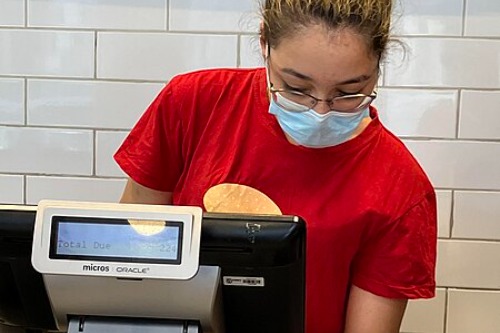
American supermarkets are well-known for their friendly, service-oriented approach. From greeters at the entrance to baggers who load your groceries into the car, customer service is taken very seriously, according to Fast Company. Europeans often find this level of attentiveness surprising, even if it’s a pleasant one. In many European countries, shopping is a more self-sufficient experience.
Some Europeans may even find it a bit overbearing at first, wondering if they’re expected to tip for such services. However, for Americans, this reflects a broader cultural emphasis on hospitality and convenience. While it’s appreciated, it can feel a little foreign to shoppers who are used to less interaction with store employees.
7. The Proliferation of Coupons

Coupons are a staple of the American supermarket experience, with entire apps, newspaper inserts, and even TV shows dedicated to “extreme couponing.” Europeans, on the other hand, rarely encounter this level of enthusiasm for discounts. While discounts and loyalty programs exist in Europe, they’re not as central to the shopping culture as in the U.S.
The prevalence of coupons ties into America’s love of bargains and the competitive nature of retail. For a European accustomed to straightforward pricing, the idea of clipping coupons or stacking discounts might seem like a lot of effort for relatively small savings. It’s a cultural quirk that highlights the different ways shoppers in each region value time versus money.
8. The Enormous Refrigerated Sections
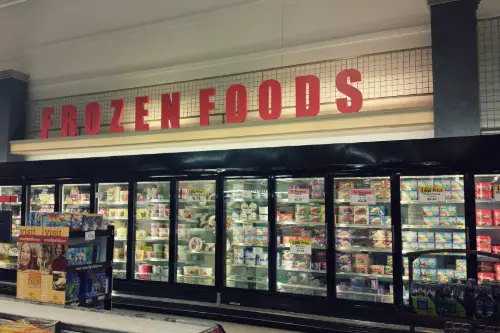
The size of the refrigerated sections in American supermarkets often surprises Europeans. In the U.S., it’s common to find entire aisles dedicated to frozen meals, ice cream, and dairy products. European supermarkets, especially in smaller towns, may have only a few freezers or fridges scattered throughout the store.
This difference reflects the American preference for buying in bulk and storing food for longer periods. Europeans, who shop more frequently and value fresh ingredients, don’t rely on frozen goods to the same extent. Seeing so much freezer space dedicated to pre-made meals and snacks can feel unnecessary or even wasteful to someone used to smaller-scale shopping.
9. The Overwhelming Cereal Aisle

Few things scream “American supermarket” more than the cereal aisle. With dozens, sometimes hundreds, of options ranging from sugary marshmallow-filled varieties to health-conscious granolas, it’s a sight to behold. For Europeans, who might only see a handful of options back home, this abundance can be baffling.
The cereal aisle is emblematic of American consumer culture—offering endless choices to suit every preference. However, it also underscores the differences in eating habits. Many Europeans prefer lighter breakfasts like bread, cheese, or yogurt, so the idea of dedicating an entire aisle to one type of food seems excessive.
10. The Ice-Cold Air Conditioning

One thing that doesn’t go unnoticed in American supermarkets is how cold they are. Thanks to heavy air conditioning, some Europeans joke that you need a sweater even in the middle of summer. While air conditioning is used in Europe, it’s rarely as powerful or ubiquitous as it is in the U.S.
The chilly temperatures are partly to keep food fresh but also to ensure a comfortable shopping experience. For Europeans who are used to milder cooling systems or even natural ventilation, the Arctic blast of American supermarkets feels unnecessary and can be a literal shock to the system.
11. The Wide Parking Lots
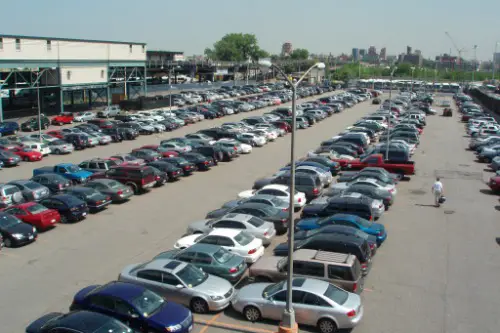
American supermarkets are often accompanied by sprawling parking lots that seem to go on forever. In Europe, where space is at a premium, parking lots tend to be smaller or even non-existent, with many shoppers walking, biking, or using public transport to reach the store.
The vast parking lots reflect America’s car-centric culture, where driving is the default mode of transportation. While convenient for loading up large hauls, Europeans may find the layout inefficient or wasteful, especially compared to the compact, pedestrian-friendly design of many European town centers.
12. The Prevalence of Loyalty Cards
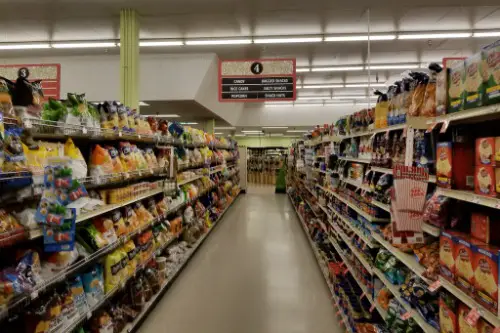
Finally, Europeans often find the obsession with loyalty cards in American supermarkets perplexing. Cashiers frequently ask if you’re a member or offer sign-ups for discounts that can feel like they’re tied to every purchase. In Europe, loyalty cards exist but aren’t as integral to the shopping experience, and discounts are often applied automatically to all shoppers.
This system is rooted in the American retail model, which incentivizes repeat business and gathers customer data for marketing purposes. While effective, it can feel intrusive or overly complicated to Europeans who are used to simpler checkout processes. The idea of carrying multiple cards just to save a few cents can feel more like a hassle than a perk.


